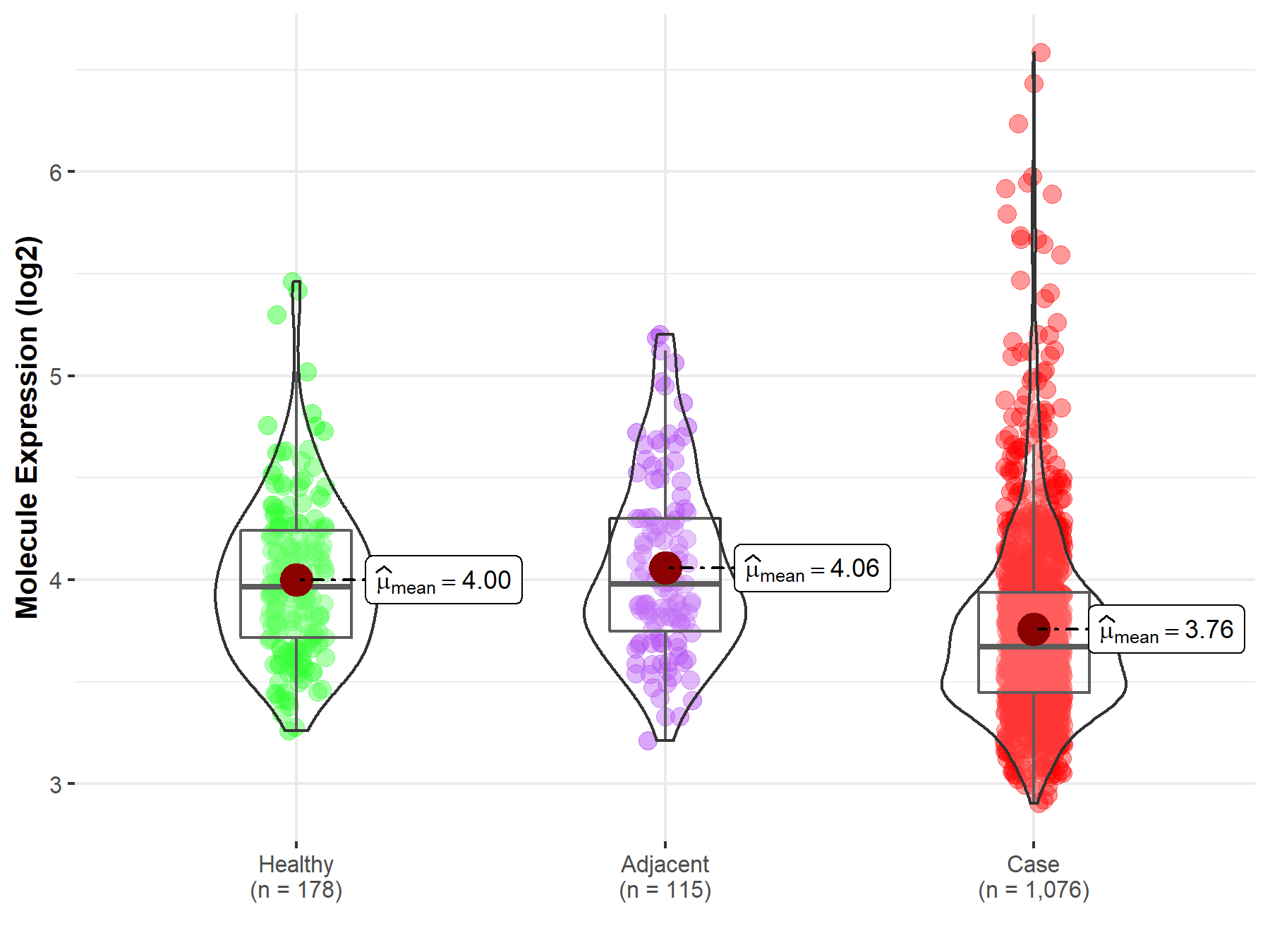Molecule Information
General Information of the Molecule (ID: Mol00063)
| Name |
Ephrin type-A receptor 3 (EPHA3)
,Homo sapiens
|
||||
|---|---|---|---|---|---|
| Synonyms |
EPH-like kinase 4; EK4; hEK4; HEK; Human embryo kinase; Tyrosine-protein kinase TYRO4; Tyrosine-protein kinase receptor ETK1; Eph-like tyrosine kinase 1; ETK; ETK1; HEK; TYRO4
Click to Show/Hide
|
||||
| Molecule Type |
Protein
|
||||
| Gene Name |
EPHA3
|
||||
| Gene ID | |||||
| Location |
chr3:89107621-89482134[+]
|
||||
| Sequence |
MDCQLSILLLLSCSVLDSFGELIPQPSNEVNLLDSKTIQGELGWISYPSHGWEEISGVDE
HYTPIRTYQVCNVMDHSQNNWLRTNWVPRNSAQKIYVELKFTLRDCNSIPLVLGTCKETF NLYYMESDDDHGVKFREHQFTKIDTIAADESFTQMDLGDRILKLNTEIREVGPVNKKGFY LAFQDVGACVALVSVRVYFKKCPFTVKNLAMFPDTVPMDSQSLVEVRGSCVNNSKEEDPP RMYCSTEGEWLVPIGKCSCNAGYEERGFMCQACRPGFYKALDGNMKCAKCPPHSSTQEDG SMNCRCENNYFRADKDPPSMACTRPPSSPRNVISNINETSVILDWSWPLDTGGRKDVTFN IICKKCGWNIKQCEPCSPNVRFLPRQFGLTNTTVTVTDLLAHTNYTFEIDAVNGVSELSS PPRQFAAVSITTNQAAPSPVLTIKKDRTSRNSISLSWQEPEHPNGIILDYEVKYYEKQEQ ETSYTILRARGTNVTISSLKPDTIYVFQIRARTAAGYGTNSRKFEFETSPDSFSISGESS QVVMIAISAAVAIILLTVVIYVLIGRFCGYKSKHGADEKRLHFGNGHLKLPGLRTYVDPH TYEDPTQAVHEFAKELDATNISIDKVVGAGEFGEVCSGRLKLPSKKEISVAIKTLKVGYT EKQRRDFLGEASIMGQFDHPNIIRLEGVVTKSKPVMIVTEYMENGSLDSFLRKHDAQFTV IQLVGMLRGIASGMKYLSDMGYVHRDLAARNILINSNLVCKVSDFGLSRVLEDDPEAAYT TRGGKIPIRWTSPEAIAYRKFTSASDVWSYGIVLWEVMSYGERPYWEMSNQDVIKAVDEG YRLPPPMDCPAALYQLMLDCWQKDRNNRPKFEQIVSILDKLIRNPGSLKIITSAAARPSN LLLDQSNVDITTFRTTGDWLNGVWTAHCKEIFTGVEYSSCDTIAKISTDDMKKVGVTVVG PQKKIISSIKALETQSKNGPVPV Click to Show/Hide
|
||||
| Function |
Receptor tyrosine kinase which binds promiscuously membrane-bound ephrin family ligands residing on adjacent cells, leading to contact-dependent bidirectional signaling into neighboring cells. The signaling pathway downstream of the receptor is referred to as forward signaling while the signaling pathway downstream of the ephrin ligand is referred to as reverse signaling. Highly promiscuous for ephrin-A ligands it binds preferentially EFNA5. Upon activation by EFNA5 regulates cell-cell adhesion, cytoskeletal organization and cell migration. Plays a role in cardiac cells migration and differentiation and regulates the formation of the atrioventricular canal and septum during development probably through activation by EFNA1. Involved in the retinotectal mapping of neurons. May also control the segregation but not the guidance of motor and sensory axons during neuromuscular circuit development.
Click to Show/Hide
|
||||
| Uniprot ID | |||||
| Ensembl ID | |||||
| HGNC ID | |||||
| Click to Show/Hide the Complete Species Lineage | |||||
Type(s) of Resistant Mechanism of This Molecule
Drug Resistance Data Categorized by Drug
Approved Drug(s)
3 drug(s) in total
| Drug Resistance Data Categorized by Their Corresponding Mechanisms | ||||
|
|
||||
| Disease Class: Lung small cell carcinoma | [1] | |||
| Resistant Disease | Lung small cell carcinoma [ICD-11: 2C25.2] | |||
| Resistant Drug | Cisplatin | |||
| Molecule Alteration | Expression | Down-regulation |
||
| Experimental Note | Revealed Based on the Cell Line Data | |||
| In Vitro Model | NCI-H446 cells | Lung | Homo sapiens (Human) | CVCL_1562 |
| NCI-H69 cells | Lung | Homo sapiens (Human) | CVCL_1579 | |
| H69/AR cells | Lung | Homo sapiens (Human) | CVCL_3513 | |
| In Vivo Model | Nude mouse xenograft model | Mus musculus | ||
| Experiment for Molecule Alteration |
Immunohistochemical staining; Western blot analysis | |||
| Experiment for Drug Resistance |
CCK8 assay; Cell scratch-wound healing assay; Flow cytometry assay | |||
| Mechanism Description | miR495 promotes the chemoresistance of SCLC through the epithelial-mesenchymal transition via Etk/BMX. Ectopic expression of Etk/BMX obviously rescued the miR495 elevation elevation-induced inhibition of drug resistance. | |||
| Drug Resistance Data Categorized by Their Corresponding Mechanisms | ||||
|
|
||||
| Disease Class: Lung small cell carcinoma | [1] | |||
| Resistant Disease | Lung small cell carcinoma [ICD-11: 2C25.2] | |||
| Resistant Drug | Doxorubicin | |||
| Molecule Alteration | Expression | Down-regulation |
||
| Experimental Note | Revealed Based on the Cell Line Data | |||
| In Vitro Model | NCI-H446 cells | Lung | Homo sapiens (Human) | CVCL_1562 |
| NCI-H69 cells | Lung | Homo sapiens (Human) | CVCL_1579 | |
| H69/AR cells | Lung | Homo sapiens (Human) | CVCL_3513 | |
| In Vivo Model | Nude mouse xenograft model | Mus musculus | ||
| Experiment for Molecule Alteration |
Immunohistochemical staining; Western blot analysis | |||
| Experiment for Drug Resistance |
CCK8 assay; Cell scratch-wound healing assay; Flow cytometry assay | |||
| Mechanism Description | miR495 promotes the chemoresistance of SCLC through the epithelial-mesenchymal transition via Etk/BMX. Ectopic expression of Etk/BMX obviously rescued the miR495 elevation elevation-induced inhibition of drug resistance. | |||
| Drug Resistance Data Categorized by Their Corresponding Mechanisms | ||||
|
|
||||
| Disease Class: Lung small cell carcinoma | [1] | |||
| Resistant Disease | Lung small cell carcinoma [ICD-11: 2C25.2] | |||
| Resistant Drug | Etoposide | |||
| Molecule Alteration | Expression | Down-regulation |
||
| Experimental Note | Revealed Based on the Cell Line Data | |||
| In Vitro Model | NCI-H446 cells | Lung | Homo sapiens (Human) | CVCL_1562 |
| NCI-H69 cells | Lung | Homo sapiens (Human) | CVCL_1579 | |
| H69/AR cells | Lung | Homo sapiens (Human) | CVCL_3513 | |
| In Vivo Model | Nude mouse xenograft model | Mus musculus | ||
| Experiment for Molecule Alteration |
Immunohistochemical staining; Western blot analysis | |||
| Experiment for Drug Resistance |
CCK8 assay; Cell scratch-wound healing assay; Flow cytometry assay | |||
| Mechanism Description | miR495 promotes the chemoresistance of SCLC through the epithelial-mesenchymal transition via Etk/BMX. Ectopic expression of Etk/BMX obviously rescued the miR495 elevation elevation-induced inhibition of drug resistance. | |||
Disease- and Tissue-specific Abundances of This Molecule
ICD Disease Classification 02

| Differential expression of molecule in resistant diseases | ||
| The Studied Tissue | Lung | |
| The Specified Disease | Lung cancer | |
| The Expression Level of Disease Section Compare with the Healthy Individual Tissue | p-value: 1.64E-12; Fold-change: -2.91E-01; Z-score: -7.42E-01 | |
| The Expression Level of Disease Section Compare with the Adjacent Tissue | p-value: 1.40E-10; Fold-change: -3.07E-01; Z-score: -7.02E-01 | |
|
Molecule expression in the normal tissue adjacent to the diseased tissue of patients
Molecule expression in the diseased tissue of patients
Molecule expression in the normal tissue of healthy individuals
|
||
| Disease-specific Molecule Abundances |

|
Click to View the Clearer Original Diagram |
Tissue-specific Molecule Abundances in Healthy Individuals


|
||
References
If you find any error in data or bug in web service, please kindly report it to Dr. Sun and Dr. Zhang.
